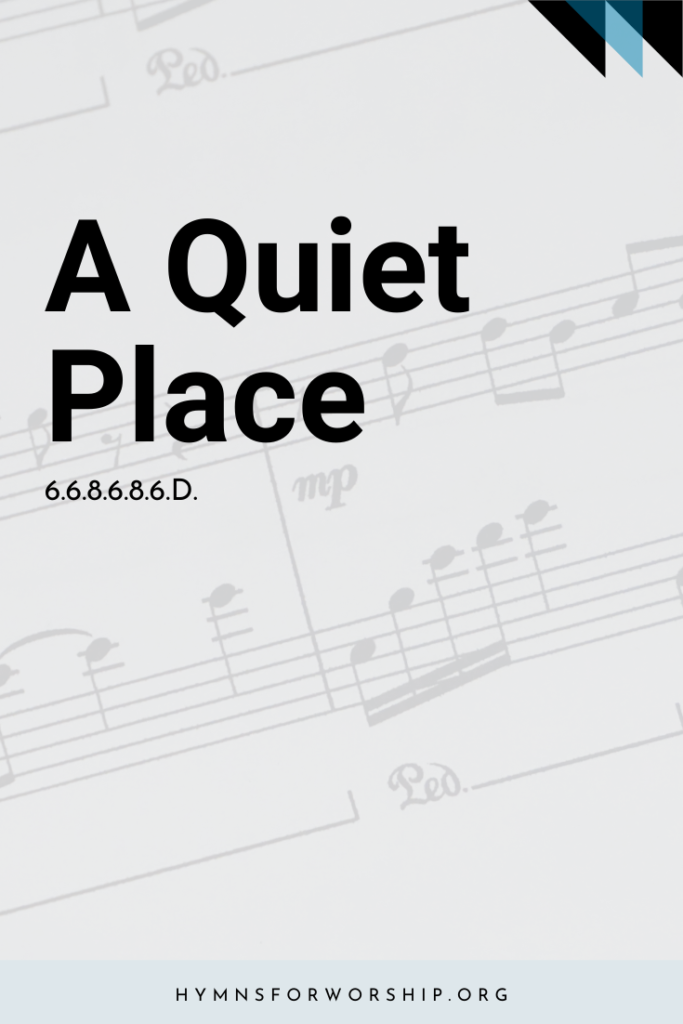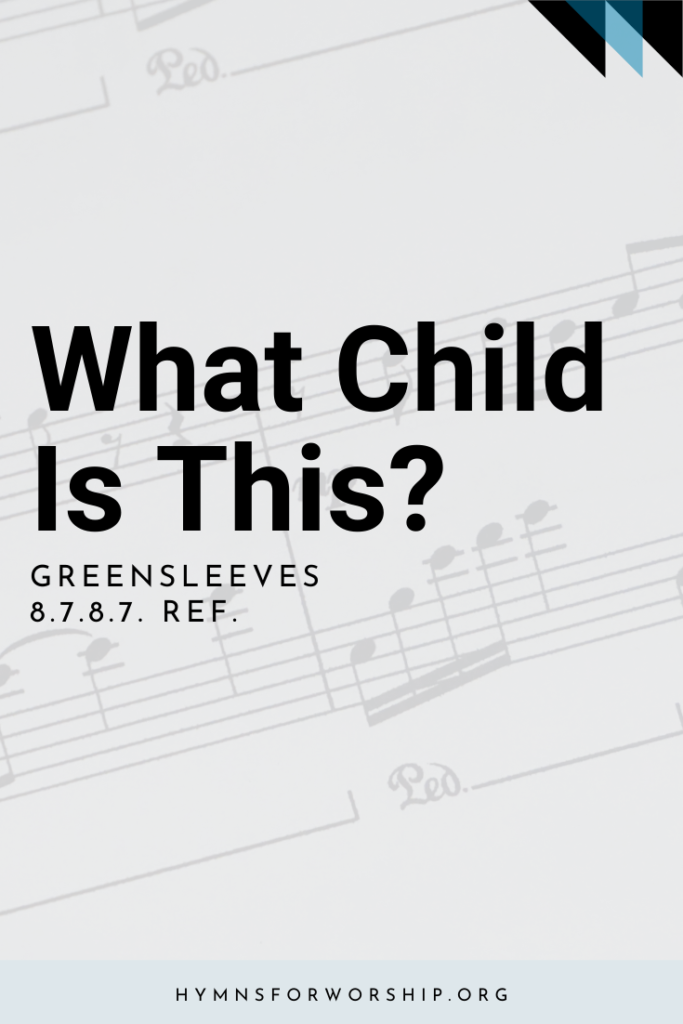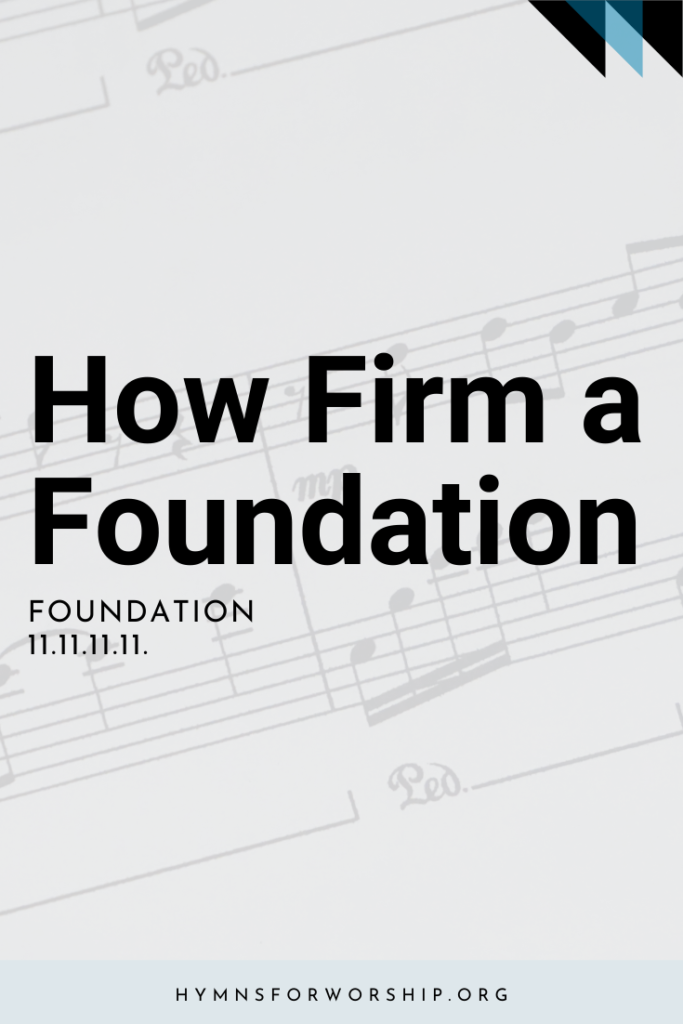JESUS CHRIST >> SUFFERINGS & DEATH
SDAH 162
What wondrous love is this,
O my soul, O my soul?
What wondrous love is this, O my soul?
What wondrous love is this


Text
1
What wondrous love is this,
O my soul, O my soul?
What wondrous love is this, O my soul?
What wondrous love is this
That caused the Lord of bliss
To bear the dreadful curse for my soul, for my soul;
To bear the dreadful curse for my soul, for my soul;
2
To God and to the Lamb
I will sing, I will sing;
To God and to the Lamb, I will sing;
To God and to the Lamb
Who is the great I am,
While millions join the theme, I will sing, I will sing;
While millions join the theme, I will sing, I will sing;
3
And when from death I’m free,
I’ll sing on, I’ll sing on;
And when from death I’m free, I’ll sing on;
And when from death I’m free,
I’ll sing and joyful be,
And through eternity I’ll sing on, I’ll sing on!
And through eternity, I’ll sing on.

Hymn Info
Biblical Reference
(a) Gal 3:13 (b) Ex 3:14
Author
Attr. to Alexander Means
Performance Suggestions
Unison
Hymn Tune
WONDROUS LOVE
Metrical Number
6.6.6.3.6.6.6.6.6.3.
Harmonized
Richard Proulx, 1975 (1937-2010)
Tune Source
Southern Harmony, 1835
Copyright
Copyright 1975 by GIA Publications., Chicago, IL. All rights reserved.
Watch
Hymn Score
Audio Guide
Recommended Reading
Back in 1981, several hymn societies gathered together in St. Catherine’s College in Oxford for their annual meeting. The chairmen of these societies were asked to “choose hymns that reflected the congregational song of their region of the world.” Carlton Young, then President of the American Society, chose four hymns to represent the diversity of the United States, the first of which was ‘What wondrous love is this’. According to him, these hymns are the “representative choice of American 19th-century folk hymnody.”
Why would this hymn lend itself to represent such a vast and diverse country as the United States?

Notes
Get to know the hymns a little deeper with the SDA Hymnal Companion. Use our song leader’s notes to engage your congregation in singing with understanding. Even better, involve kids in learning this hymn with our homeschooling materials.
The love of God for you and me is displayed in the death of Jesus on the cross of Calvary. It is a great wonder that the Lord of glory would die on our behalf to bear the curse of sin that we are suppose to bear. The greatness of His love will be the theme of our songs through all eternity. (Lesson 11, 2nd Quarter 2021 – Tuesday, The Substitution, 6/8/2021)
God’s wondrous love caused Him to bear the dreadful curse for us and die in our behalf to save us. As a result His love will be the theme of our songs throughout the eternal ages to come. Join the millions who will sing about His wondrous love through all eternity. (Lesson 12, 2nd Quarter 2021 -Monday, The Covenant and the Sacrifice, 6/14/2021)
The tunebook Hesperian Harp, compiled by William Hauser of Wadley, Georgia, in 1848, gives credit for these words to “the Rev. Alex Means, A.M., M.D., D.D., LL.D.,” a Methodist minister of Oxford, Georgia. The 1971 edition of The Sacred Harp says, “The authorship of the words and music of this tune are unknown.” The text given at the head in this case is John 3:16.
Researchers in hymnody call this unusual meter the “Captain Kidd” meter, referring to a ballad about a pirate who was executed in England in 1701. Ellen Jane Lorenz Porter and John F. Garst, writing in the October 1979 The Hymn, tell of finding at least 19 tunes in the eighteenth- and early-nineteenth-century American tunebooks that are in this meter and used with sacred hymn texts. They also state that “this ancient pattern of English origin goes back in secular songs to at least 1549 and in sacred ones to a 1567 Scottish collection of ‘ballads changed out of profane songs into godly songs.’”
It should be pointed out that the beautiful melody of WONDROUS LOVE is a completely different tune, and related to the “Captain Kidd” ballad sonly by the poetic meter. The Dictionary of American Hymnology, First Line Index, lists the first appearance of the text in Stith Mead’s General Selection of the Newest and Most Admired Hymns and Spiritual Songs Now in Use, Lynchburg, Virginia, 1811. (This makes authorship by Alexander Means improbable, since he would have written the hymn at age 10.) The first recorded publication of this text and tune together is in William Walker’s Southern Harmony, the first edition of which was in 1835. However, this tune did not appear until the appendix of the 1843 edition. (See example printed on page 212.) The text and tune fit together so well that later tunebooks, including many of the Baptist hymnals, included this popular favorite. The arrangement SDAH uses is by Richard Proulx, who since the autumn of 1981 has been minister of music at Holy Name Cathedral, Chicago. Born in Minnesota in 1937, he attended University of Minnesota, McPhail School of Music, and Columbus Boychoir School. His choir of men and boys at Holy Childhood Church, Minneapolis, gained a national reputation for excellence through telecasts, recordings, and concerts with the Minnesota Symphony. Going to Seattle in 1968, he directed three choirs and played the organ at St. Thomas Episcopal Church, at the same time serving as organist at Temple de Hirsch Sinai until 1981. He has more than 100 compositions in print, including works for organ, chorus, instrumental ensembles, and vocal solos. He was one of the editors of the Catholic hymnal Worship II. He makes regular guest appearances as organist, conductor, and choral clinician.






